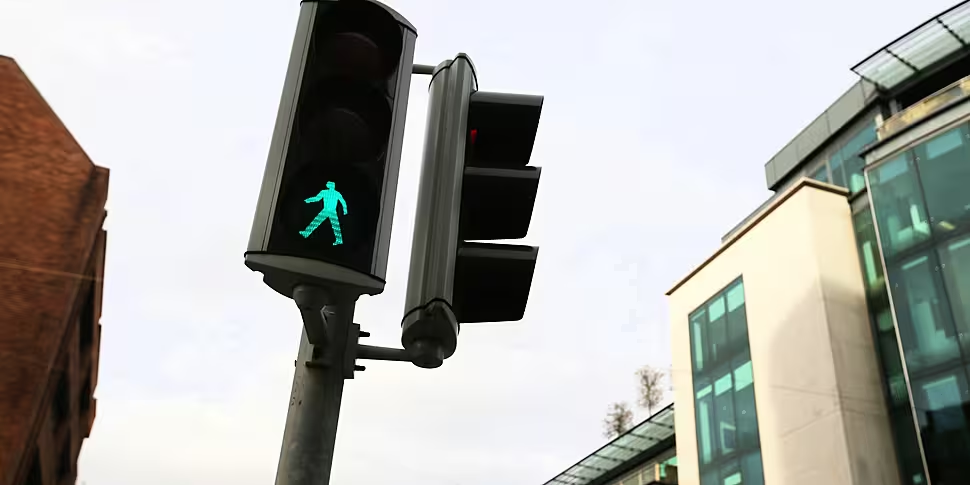Changes made during the pandemic to make more space for pedestrians are examples of "the way we should be designing our streets anyway", a sustainable transport campaigner says.
Early in the pandemic, Dublin City Council reduced the time available to cars to pass through traffic lights, in a bid to improve pedestrian mobility.
This came alongside measures such as the introduction of temporary cycling lanes in parts of the city centre.
With much of the country now reopening and gradually returning to normal, some drivers now want to see more time given to motorists again.
One letter in today's Irish Times suggests that "at many junctions only two or three cars are allowed through" per green light.
Ciarán Ferrie, a sustainable transport advocate, told The Hard Shoulder this isn't a case of pedestrians getting more time to cross the road.
He explained: "What happened is the time it changes to go through a full sequence of light was reduced. Dublin City Council reduced it from 120 seconds for a cycle to 80 seconds for a cycle.
“It means people who are walking don’t have to wait quite as long as they would have done previously.
"Obviously, that has had an impact on the available time for vehicle traffic to get through.”
Ciarán suggested Dublin still has an accessibility problem when it comes to people having enough time for the road.
He said there's still often not enough time for older people or parents with small children or buggies to cross.
He said he sympathises with motorists who are encountering delays at traffic lights, but suggested the reality is over 70% of the people heading into the city are doing so through sustainable modes - either buses, walking or cycling.
Ciarán said it has been an official policy for almost a decade to prioritise pedestrian movement on urban streets, but that's often not reflected on the ground.
He said: “A lot of the measures were introduced during the pandemic to make more space for pedestrians… while it was done in response to the pandemic, it does reflect the way we should be designing our streets anyway.
“We need to look at the balance of how public space is allocated - and particularly how much of the public space is allocated to the movement and parking of private cars in the city.”









